Breadcrumb
News archives
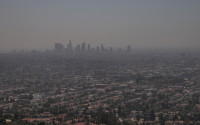
Fighting Climate Change Isn’t an Automatic Win for Environmental Justice
Some simulated pathways for reducing emissions in the U.S. maintained or exacerbated existing racial inequities
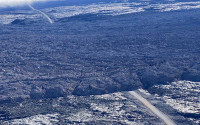
Broken Record: Atmospheric Carbon Dioxide Levels Jump Again
Average May reading 3.0 parts per million higher than in 2022
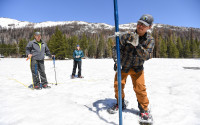
California Snowlines On Track To Be 1,600 Feet Higher by Century’s End
Lower-elevation ski resorts could lose more than 70 percent of their natural snow supply

Scripps Student Spotlight: Pascal Polonik
Graduate student researches human-environment interactions and how atmospheric particulates impact climate and health
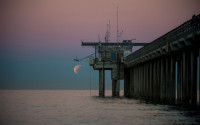
Century-Old Scripps Pier Records Reveal Precipitation Trends
The salinity of seawater is used to detect El Niños of the past
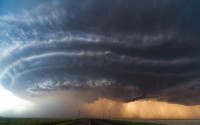
New Look at Climate Data Shows Substantially Wetter Rain and Snow Days Ahead
“Once-in-a-century” storms could be experienced more than once in a lifetime

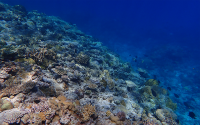
New Study Provides First Comprehensive Look at Oxygen Loss on Coral Reefs
Scripps Oceanography scientists and collaborators provide first-of-its-kind assessment of hypoxia, or low oxygen levels, across 32 coral reef sites around the world
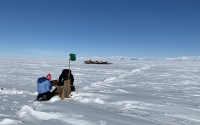
Researchers Extract First Layered Lake-Sediment Sample from Subglacial Antarctica
Scripps Oceanography alumnus and colleagues describe the sample's importance in understanding past dynamics of the Antarctic ice sheet and its ecosystems

UC San Diego Receives $15M Cryptocurrency Donation, Largest for Research on Airborne Pathogens
Vitalik Buterin directs gift to research on aerosols, establishing the UC San Diego Meta-Institute for Airborne Disease in a Changing Climate

Scripps Oceanography Leads Sessions on Climate Change, Space, and Blue Tech at SXSW 2023
Expanded climate change programming at Conference focuses on impacts and solutions
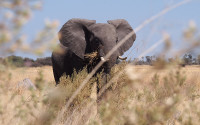
After Devastating Wildlife Loss, Scripps Chemical Oceanographer Searches for Connection Between Water Resources and Wildlife
A photo essay from Botswana, Africa
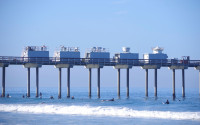
Scripps Pier, UC San Diego Mount Soledad Facility to Host Coastal Marine Cloud Study
Year-long field campaign launches Feb. 15 to study the marine clouds that shade and cool the earth
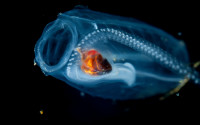
SalpPOOP Study Highlights Biogeochemical Importance of Zooplankton Fecal Pellets
Blooms of marine organisms transfer loads of atmospheric carbon into the deep ocean
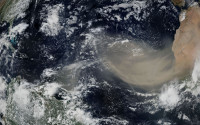
Increased Atmospheric Dust has Masked Power of Greenhouse Gases to Warm Planet
Study finds increasing levels of dust likely had cooling effect that slowed global warming, which could speed up if dust stops increasing
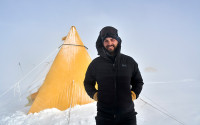
Probing Antarctica by Land, Sea, Air, and from Earth Orbit
Scripps Oceanography research agenda ranges from microscopic organisms to ancient ice and studying ice sheet mass loss
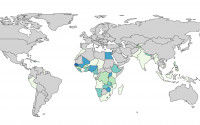
Climate Change Exacerbating Gastrointestinal Problems in Children
Extreme weather events associated with diarrhea-related illness, death
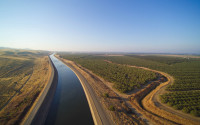
Scripps Climate Program Renewed with New Focus on Adaptation
$5 million in NOAA funding will support California Nevada Adaptation Program

Atmospheric River Reconnaissance Flight Season Gets an Early Start this Winter
Air Force and NOAA aircraft collecting data over the Pacific from November to March
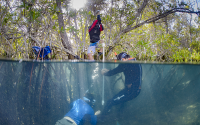
Scientists Dig into Sediments for Clues on Carbon Storage
From San Diego to the Galapagos Islands and beyond, Scripps Oceanography researchers are revealing the mysteries of carbon sequestration in aquatic ecosystems
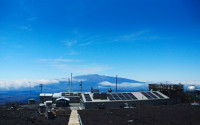
Historic Keeling Curve Observation Interrupted by Volcanic Eruption
Options for relocating measurement equipment being explored
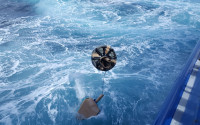
Study of Ocean Currents Reveal Intensification of Tropical Cyclones Around the World
Researchers use Scripps-developed ocean drifter data to spot 30-year trend
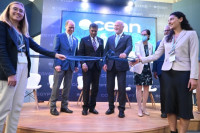
The Ocean Pavilion Announces Schedule of Events for COP27
Pavilion bringing world leaders in ocean science, engineering, and policy together to highlight ocean’s enormous role in climate
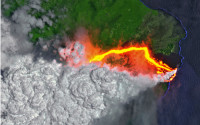
Clarity about Key Climate Dynamic Creates More Pressure to Rein in Global Temperature Increase
Role of carbon dioxide in heating planet unmasked, forcing new projections of how warm things can get

Meet the UC San Diego Delegates Headed to Egypt for UN Climate Conference
Students and faculty from Scripps Institution of Oceanography and School of Global Policy and Strategy prepare to attend COP27 in Sharm El-Sheikh, Egypt
Pagination
Sign Up For
Explorations Now
explorations now is the free award-winning digital science magazine from Scripps Institution of Oceanography. Join subscribers from around the world and keep up on our cutting-edge research.